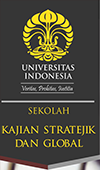Abstract
This Journal utilizes a thorough literature review approach to explore the evolving relationship between artificial intelligence (AI) and its potential use as a tool for terrorism. With the rapid advancement of AI technologies, there is a growing concern about their possible misuse by terrorist groups. This study extensively examines existing research, policy documents, and expert opinions and investigates the complex connections between AI and terrorism. The literature review delves into historical examples, current case studies, and emerging trends to clarify the various ways in which AI could be employed for harmful purposes by terrorist organizations. By analyzing recruitment strategies, communication methods, propaganda dissemination, and attack planning, the study offers a detailed understanding of the potential risks associated with the intersection of AI and terrorism. Ethical and legal considerations are thoroughly examined, addressing issues of accountability and the necessity for regulatory frameworks to guide the ethical use of AI technologies in the context of terrorism. In response to the identified risks
References
Journal Articles
Bagio-Hari, Ismudianto, N., & Haryanto, R. (2019). 5 steps in data processing for maritime intelligence decision making. Journal of Maritime Research, 16(3), 79–83.
Bazarkina, D. (2021). Artificial Intelligence Enhancing Social Engineering in Terrorism: The new Threats. 3rd European Conference on the Impact of Artificial Intelligence and Robotics, ECIAIR 2021, 19–25. https://doi.org/10.34190/EAIR.21.008
Bianchi, S., Mancuso, M., Paternoster, C., Kalpakis, G., Tsikrika, T., Vrochidis, S., Kozhuharova, D., & Jaeger, B. (2023). Artificial Intelligence to Counter Cyber-Terrorism. International Conference on Cybersecurity and Cybercrime, X(101080090), 12–20.
Brennan, M. G. (2021). Counter-Terrorism, Ethics and Technology: Emerging Challenges at the Frontiers of Counter-Terrorism. https://www.dropbox.com/s/vl6usadvj25iens/978-3-030-90221-6.pdf?dl=0
Eide, E., & Kuelius, R. (2018). Whistleblowers and journalistic ideals: Surveillance, snowden and the meta-coverage of journalism. Northern Lights, 16(1), 75–95. https://doi.org/10.1386/nl.16.75_1
Erol, Ç., & Gezer, M. (2020). Data Collection Approaches for Artificial Intelligence Applications in Healthcare. Who Runs the World: Data, December 2020, 227–237. https://doi.org/10.26650/b/et06.2020.011.13
Gandomi, A. H., Chen, F., & Abualigah, L. (2023). Big Data Analytics Using Artificial Intelligence. Electronics (Switzerland), 12(4), 3–7. https://doi.org/10.3390/electronics12040957
Ganor, B. (2021). Artificial or Human: A New Era of Counterterrorism Intelligence? Studies in Conflict and Terrorism, 44(7), 605–624. https://doi.org/10.1080/1057610X.2019.1568815
Greene, K. J. (2015). ISIS: Trends in terrorist media and propaganda. International Studies Capstone Research Papers Cedarville, 58. https://digitalcommons.cedarville.edu/international_studies_capstones/3/
Hijriyah, L., Alias, A., & Mohd Sahabuddin, M. F. (2023). Exploring walkability research trends based on systematic literature review (SLR) by applying PRISMA. Open House International. https://doi.org/10.1108/OHI-02-2023-0031
Hoadley, D. S., & Lucas, N. J. (2018). Artificial intelligence and national security. a51.nl. https://a51.nl/sites/default/files/pdf/R45178.pdf
Ionescu, B., Ghenescu, M., Rastoceanu, F., Roman, R., & Buric, M. (2020). Artificial Intelligence Fights Crime and Terrorism at a New Level. IEEE Multimedia, 27(2), 55–61. https://doi.org/10.1109/MMUL.2020.2994403
Ismayil, E., & Ismayil, E. K. (2022). Media and Terrorism in the 21st Century. In Media and Terrorism in the 21st Century. https://doi.org/10.4018/978-1-7998-9755-2
Jean, A. (2020). A brief history of artificial intelligence. Medecine/Sciences, 36(11), 1059–1067. https://doi.org/10.1051/medsci/2020189
Joe Whittaker. (2022). Rethinking Online Radicalization. Perspectives on Terrorism , 16(4), 27–40.
Khan, F. A., Li, G., Khan, A. N., Khan, Q. W., Hadjouni, M., & Elmannai, H. (2023). AI-Driven Counter-Terrorism: Enhancing Global Security Through Advanced Predictive Analytics. IEEE Access, 11(September), 135864–135879. https://doi.org/10.1109/ACCESS.2023.3336811
Manikonda, L., Deotale, A., & Kambhampati, S. (2018). What’s up with Privacy?: User Preferences and Privacy Concerns in Intelligent Personal Assistants. AIES 2018 - Proceedings of the 2018 AAAI/ACM Conference on AI, Ethics, and Society, 229–235. https://doi.org/10.1145/3278721.3278773
Morse, S. (2003). Biological and chemical terrorism. Technology in Society, 25(4), 557–563. https://doi.org/10.1016/j.techsoc.2003.09.020
Napang, Marthen; Nurhasanah, Siti; and Rohman, Syaiful (2019) "India-Pakistan Dispute on Kashmir: Pakistan's Allegiance in the Effortsof "War on Terrorism" of the United States after the WTC 9/11 Attack," Journal of Terrorism Studies: Vol. 1: No. 2, Article 3.
Rohman, Syaiful and Nurhasanah, Siti (2019) "Paham Radikalisme Berdasarkan Perspektif Agama (Radicalism Based On Religious Perspective)," Journal of Terrorism Studies: Vol. 1: No. 1, Article 2.
Rossi, F. (2016). Artificial Intelligence: potential benefits and ethical considerations. Policy Department C: Citizens RIghts and Constitutional Affairs, European Parliament Briefing, PE 571.380, 8. http://www.europarl.europa.eu/RegData/etudes/BRIE/2016/571380/IPOL_BRI%282016%29571380_EN.pdf%0Ahttp://www.europarl.europa.eu/committees/en/supporting-analyses-search.html
Saidi, F., & Trabelsi, Z. (2022). A hybrid deep learning-based framework for future terrorist activities modeling and prediction. Egyptian Informatics Journal, 23(3), 437–446. https://doi.org/10.1016/j.eij.2022.04.001
Tambouratzis, T., Giannatsis, J., Kyriazis, A., & Siotropos, P. (2020). Applying the computational intelligence paradigm to nuclear power plant operation: A review (1990-2015). In Research Anthology on Artificial Intelligence Applications in Security (Vols. 3–4, pp. 1507–1578). https://doi.org/10.4018/978-1-7998-7705-9.ch068
terror recruitment tactic.pdf. (n.d.).
Verma, D. C., Gartner, S. S., Felmlee, D. H., Braines, D., & Yarlagadda, R. (2020). Using AI/ML to predict perpetrators for terrorist incidents. Proceedings of SPIE - The International Society for Optical Engineering, 11413. https://doi.org/10.1117/12.2558804
Verma, D., Yarlagadda, R., Gartner, S. S., & Felmlee, D. (2017). Technology , Knowledge , and Society. 15(4).
Vile, J., Hudson, D., & Schultz, D. (2014). USA Patriot Act of 2001. Encyclopedia of the First Amendment, 1–132. https://doi.org/10.4135/9781604265774.n1369
Yamane, N. (2020). Artificial Intelligence in the Legal Field and the Indispensable Human Element Legal Ethics Demands. The Georgetown Journal of Legal Ethics, 33(877), 877–890. https://www.americanbar.org/groups/real_property_trust_estate/publications/ereport/rpte-
Recommended Citation
Krisnayanto, Krisnayanto and Suryadi, Suryadi
(2025)
"EXPLORING THE DARK HORIZON : ARTIFICIAL INTELLIGENCE (AI) AS CYBERTERRORISM TOOLS,"
Journal of Terrorism Studies: Vol. 7:
No.
1, Article 1.
DOI: 10.7454/jts.v7i1.1084
Available at:
https://scholarhub.ui.ac.id/jts/vol7/iss1/1

